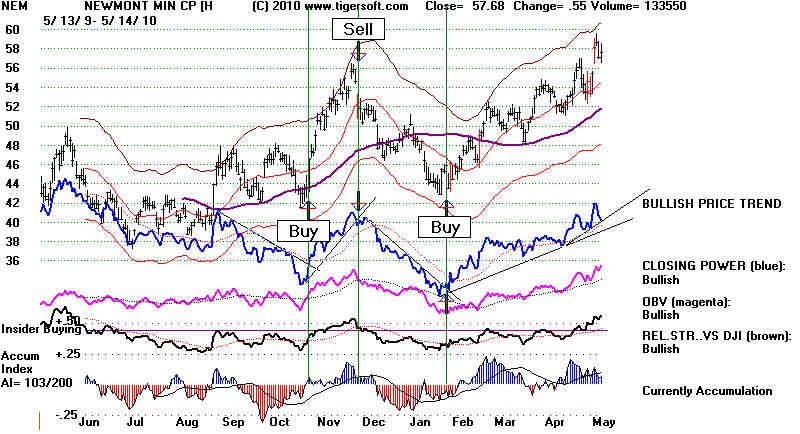
TigerSoft News Service 5/17/2010 www.tigersoft.com
The San Francisco Earthquake of 1906
Led To The Stock Market Crash of 1907
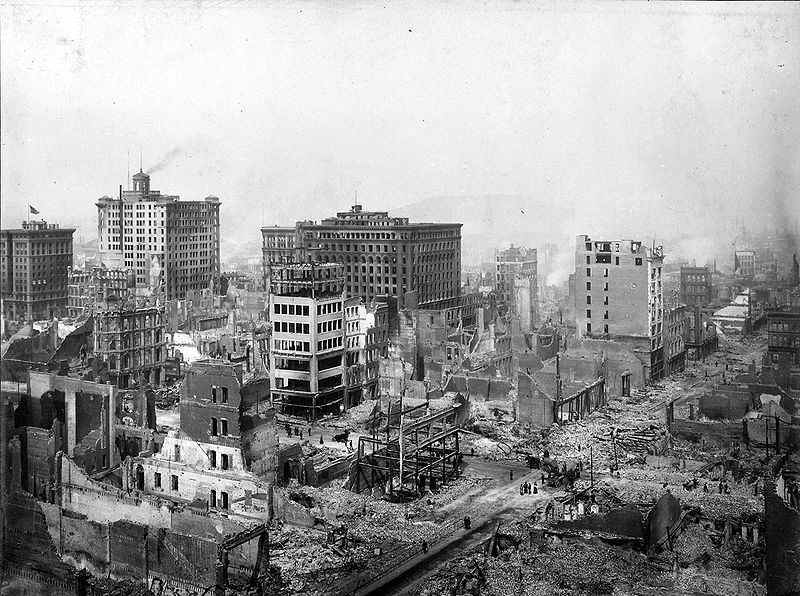
Is This Why Professionals Are Now Selling to The Public?
by William Schmidt, Ph.D.
(C) 2010 www.tigersoft.com
All rights reserved.
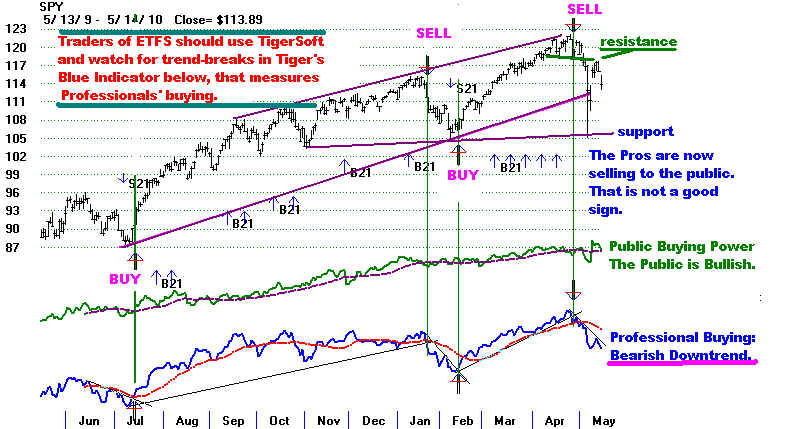
Will The Gulf Coast Oil Spill Lead To A New Bear Market in 2010 or 2011?
What if A Hurricane Spreads The Oil even More this Summer?
What if the Oil Keeps Surging out for years and years?
Gold Stocks are
often rally at the end of a bull market.
What if Gold stocks turn down and there is little left to lift
the market?
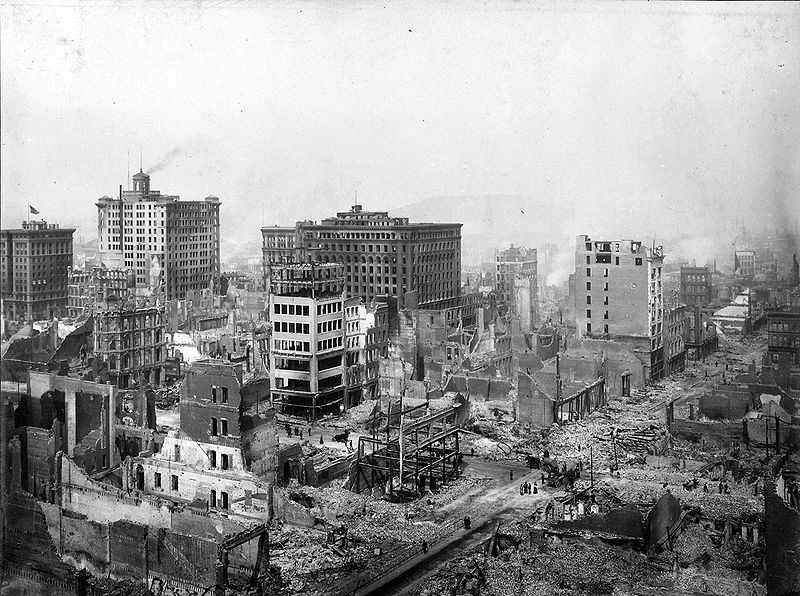
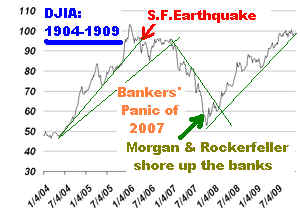

Great 1906 San Francisco Earthquake
5:12 AM - April 18, 1906
The quake itself - foreshock occurred with sufficient force to be
felt widely throughout the San Francisco Bay area. The real
earthquake began 20 to 25 seconds later. Violent shocks and
shaking lasted 60 seconds. The pictures show the damage. The
epicenter was two miles off short. The magnitude was estimated
from 7.7 to 8.3 on Richter scale. Three thousand people died as
over 80% of the city was destroyed by the quake and the
resulting fires. Nearby cities suffered severe damage, too.
Sanra Rosa's entire downtown was destroyed, as was much
of San Jose's. Parts of the San Andreas fault moved as much as
28 feet. Details.
Big
Earthquakes.
At the time San Francisco was America's 9th largest city.

How The Stock Market Reacted
To News of The Earthquake
The stock market had been in a bull market before the Earthquake The DJI was in a consolidation and
pull-back phase. It had ranged between 93 and 103 from December 11, 1905 to the day of the quake,
April 18. 1906. The day before the DJI closed at 96.84. It then fell steadily to 86.45 over the next two
weeks as full reports of the damge came in. After that, it repeatedly tried to rally over the next 8
months but could not take get past 96.75. We can imagine that insurance companies were heavy sellers
of stocks on sttrength, raising cash for the claims that were starting to come in. See these studies
for more details.
Odell, Kerry A.; Weidenmier, Marc D. (2004), "Real Shock, Monetary Aftershock:
The 1906 San Francisco Earthquake and the Panic of 1907", The Journal of Economic History 64 (4): 1002–1027,
doi:10.1017/S0022050704043062
"San Francisco's $200,000,000 “ash heap” involves complications which will be felt
on all financial markets for many months to come [and] the payment of losses sustained
… represents a financial undertaking of far-reaching magnitude….
(Source: The Financial Times, London July 6, 1906.)
"In April 1906 the San Francisco earthquake and fire caused damage equal to more
than 1 percent of GNP. Although the real effect of this shock was localized, it had an
international financial impact: large amounts of gold flowed into the country in autumn
1906 as foreign insurers paid claims on their San Francisco policies out of home funds.
This outflow prompted the Bank of England to discriminate against American finance bills
and, along with other European central banks, to raise interest rates. These policies
pushed the United States into recession and set the stage for the Panic of 1907."
(Source.)
Eleven months after the Crash, on March 13, 1907, the DJI broke below the low closing of
July 13, 1906 at 85.18. This startred the financial panic of 1907, which took the DJI down to
50 8... The
Panic of 1907


JP Morgan - Rescuer of the Stock Market in November 1907
In late 1906, the Bank of England raised its interest rates to protect the
Pound and keep more funds
in London. Tightening up interest rates brought more selling.
Another factor was the Hepburn Act, which gave the Interstate Commerce Commission (ICC) the power
to set maximum railroad rates. This became law in July 1906.
Railroad stocks were sold off. Union Pacific
—among the most common stocks used as collateral—fell
50 points.
June 1907 - an offering of New York City bonds
failed. This forced the city to consider bankruptcy.
July 1907 - the copper market collapsed.
August 1907 - the Standard Oil Company was fined $29
million for antitrust violations.[10]
In the first nine months of 1907, stocks were lower by 24.4%.[11]
These factor led to the start a new trading range
from 77 to 85, which lasted until Aug 7, 1907, when
the market began a speedier decline to 53 on Nov 14th. There it
double-bottomed on Nov 22, 1907 and
began a steady rally back to 105.53 on Nov 29, 1909. It then lost about 1/2 of what
it had gained from
1907 to 1909.
The details of the
1907 panic are well known. See. http://en.wikipedia.org/wiki/Panic_of_1907
There was no national bank to step in and save Wall Street in 1907. This was done by
a consortium
of bankers led by JP Morgan and by the richest man in America, John D. Rockefeller.
Will The Gulf Coast Oil Spill
Lead To A New Bear Market in 2010 or 2011?
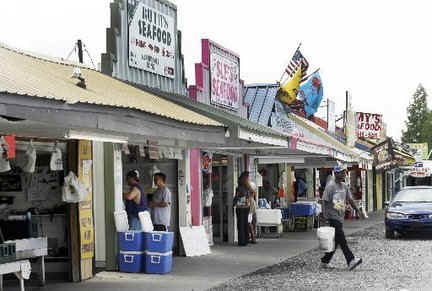
( http://www.nola.com/news/gulf-oil-spill/index.ssf/2010/05/gulf_oil_spill_could_result_in.html )
Law suits and insurance claims related to the BP Oil Spil will surely keep rising.
http://www.nola.com/news/gulf-oil-spill/index.ssf/2010/05/gulf_oil_spill_could_result_in.html
Who will pay for all the damges?
Gulf Oil Spill Disaster: The Trigger of American Economic Collapse
Ten-mile oil plume found beneath surface of Gulf of Mexico
http://www.guardian.co.uk/environment/2010/may/16/gulf-oil-spill-bp
Only two insurance stocks show bearish head and shoulders
patterns now.
TRV shows
bearish head and shoulders.
The Travelers Companies, Inc., through its subsidiaries, provides various commercial and
personal property
and casualty insurance products and services to businesses, government units,
associations, and individuals
primarily in the United States 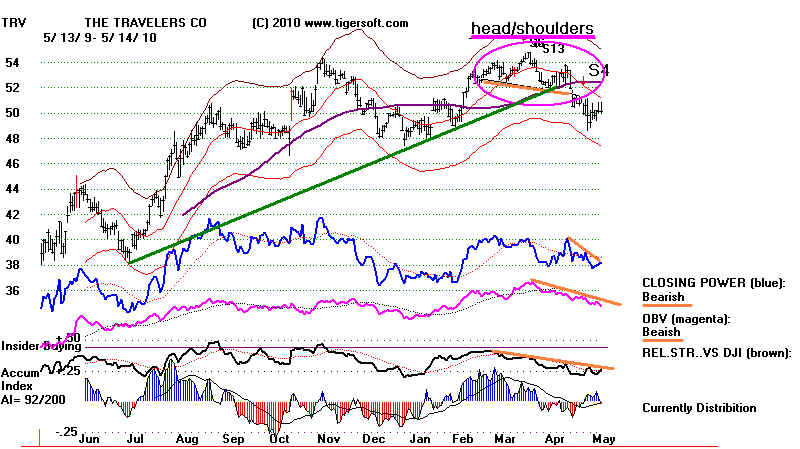
ORI shows
emerging bearish head and shoulders.
Old Republic International Corporation, through its subsidiaries, engages in insurance
underwriting business.
It operates in three segments: General Insurance, Mortgage Guaranty, and Title Insurance.
The General Insurance
segment provides liability insurance coverages to businesses, government, and other
institutions in transportation,
commercial construction, forest products, energy, general manufacturing, and financial
services sectors in North America
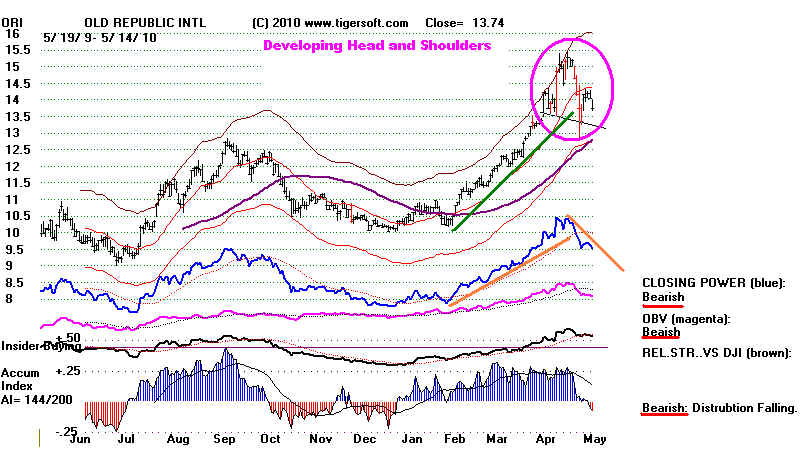
UNM reversed diwbward
very sgarply after BP Destruction of Gulf
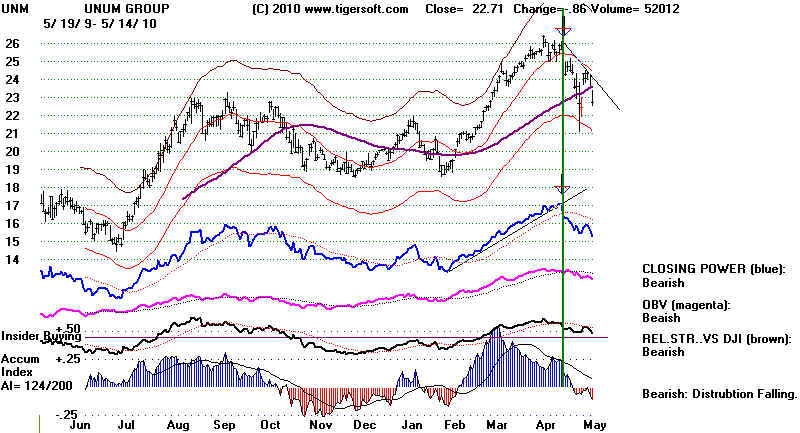
They are often rally at the end of a bull market.
What if Gold stocks turn down and there is little left to lift the market?
